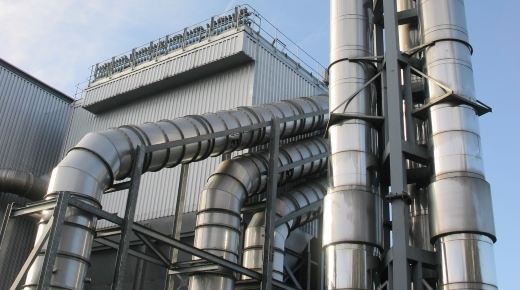Open Systems Lab Bre Structural Testing - BRE Group
Open Systems Lab identify opportunities through BRE structural testing
Overview
Following initial work with the University of Edinburgh, Open Systems Lab commissioned BRE to undertake large-scale structural testing of its latest project. Successful testing validated performance, providing confidence during the pre-commercial prototyping process and identifying improvements and areas for further development.
About
Open Systems Lab is a non-profit R&D lab working on open digital innovation to tackle systemic social, economic and environmental challenges. The company redesigns the systems that shape the places we live.
Background
Open Systems Lab were keen to validate the performance of the product against Eurocode/BS standards for timber structures, while identifying improvements and areas for further development. Open Systems Lab are pleased with the successful testing programme which has provided independent verification of the effectiveness of the product.
Challenges
Non-profit research and development lab, Open Systems Lab, is working on open digital innovation to tackle systemic social, economic and environmental challenges. WikiHouse, a digitally manufactured building system, is an ongoing experiment into the intersection of sustainable construction, digital fabrication, and online open-source communities. Unlike other modular approaches which require a large factory, WikiHouse can be manufactured by a distributed network of small, local micro-factories using digital fabrication tools.
Independent testing was necessary as part of the pre-commercial prototyping process. Initial work was done with the University of Edinburgh to develop the structural testing procedures and conduct small scale experimental lab tests.
A lack of empirical knowledge and related research of the behaviour of CNC machined timber structures, particularly regarding timber-to-timber connections, meant that large-scale testing facilities were required to understand how this construction method performed as a whole interdependent system. This knowledge is particularly crucial, as Clayton Prest, commenting on behalf of Open Systems Lab, explains “Not having this knowledge would lead to lower adoption and less interest from designers, engineers, and insurers, and a longer lead time for design and delivery that would make this product unfeasible and uncompetitive with other offerings in the DfMA market”.
Solutions
Testing took place at BRE’s dedicated testing facility, by technicians with extensive knowledge and experience of structural testing, over three weeks from May to June 2021. The test programme covered two types of testing: racking strength and stiffness of two- dimensional panel and a three-dimensional module test. Prior to the test programme with BRE, testing and prototyping had only been carried out on individual ‘blocks’ and connections, but Open Systems Lab were keen to understand how these ‘blocks’ would perform as a whole connected system.
BRE’s technicians carried out a range of racking tests on 5.4m wall sections: horizontal load without openings; horizontal and vertical load without openings; horizontal load with openings; horizontal and vertical load with openings. These 2D wall tests were followed by combined vertical and horizontal load testing of a 3D volumetric module.

Benefits
Commenting on the success of the testing, Clayton Prest shared, “With the support of BRE’s world-class engineering expertise and facilities, this has been a watershed moment in the development of WikiHouse – a tested, validated, zero- carbon construction system that anyone can use. We are grateful for the dedication and technical problem-solving of the BRE team, in collaboration with the University of Edinburgh researchers, to enable us to test and analyse the behaviour of these innovative, digitally- fabricated timber structures, and make this knowledge available to everyone to improve on.”
The collaboration has also provided a structure for Open Systems Lab to work with University of Edinburgh, supported by BRE experts, to produce two reports and academic journal articles to further knowledge in the field of hollow-core CNC timber structures.
Key benefits included:
Independent verification validated product performance
Improved product understanding during the pre-commercial prototyping process
Led to the production of reports and academic articles to further hollow-core CNC timber structures knowledge
BRE has been a trusted resource throughout the testing period and Open Systems Lab wish to build on this strong working relationship through continued structural testing. The organisation anticipates further rounds of testing as they develop new subassemblies as part of their Skylark product range, and validate improvements to the design of existing elements. The company are looking forward to continuing the collaboration with BRE.

BRE testing
Backed by an extraordinary range of test facilities, our experts test individual materials and products, building systems, engineering structures and whole buildings, using established methods and bespoke research tests and simulations. We typically test against published standards, but can develop dedicated procedures for new, unique or innovative products.
Find out more about BRE testing